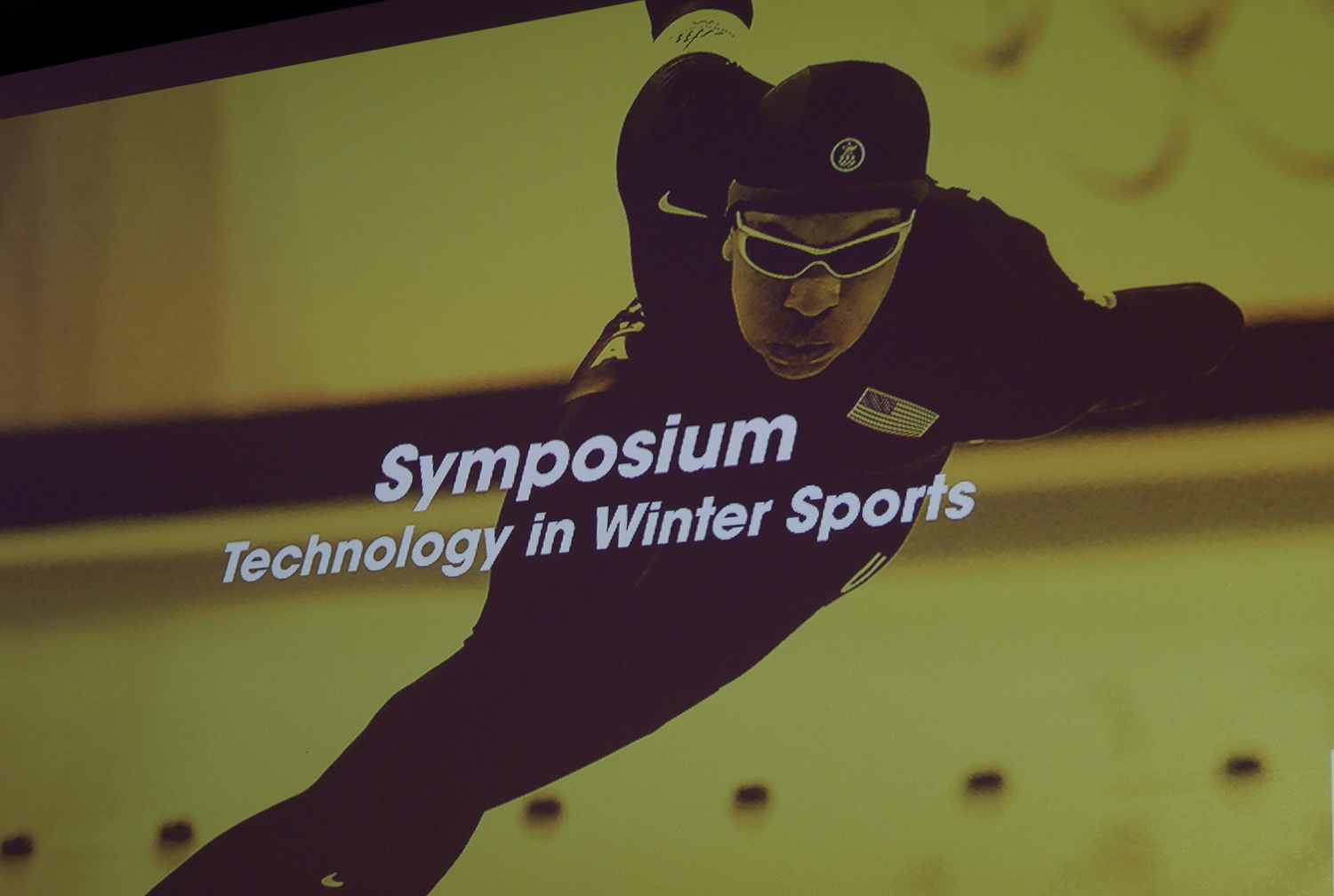The difference between a gold and silver Olympic medal can be as little as three thousandth of a second during the Winter Games. Yesterday’s TU Delft symposium Technology in Winter Sports showed how technology can make that difference.
If you can reduce the air drag for a speed skater, you can give them a competitive advantage. (Photo: Nora de Vries)
Several experts spoke at the ‘Symposium Technology in Winter Sports’ in the Senaatszaal at the Aula. Speakers included TU Delft’s Andrea Sciacchitano and Eline van der Kruk. The central question of the day was: how is science helping improve performances in winter sports? The event was hosted by Ria Visser, a former professional speed skater who won a silver medal for the 1500 m race at the 1980 Winter Olympics.
The introduction was done by Dr Frans van der Helm, the scientific director of the TU Delft Sports Engineering Institute, who said that technology is becoming more and more important in sports, as the difference between winning and losing is becoming smaller; and that it really pays for athletes to invest time in learning everything there is to know about, for example, technique and equipment.
Modelling movement
The first speaker of the day was Dr Ton van den Bogert of Cleveland State University, who specialises in making computer models of movement to determine the best trajectory for a mechanical system, for example the human body. One problem for scientists is that it is very complicated to measure data in sports research. Van den Bogert gave the example of an athlete skiing down a mountain. Observing this movement with cameras is not optimal, because they need to be recalibrated multiple times during the shot, which leads to gaps in the data.
Scientists can get smoother and more accurate trajectories if they model the movement with a computer. The same technique can be used to predict if an athlete will benefit from different pieces of equipment or to find theoretically optimal techniques that athletes should adopt. Currently, Dr van den Bogert is working on musculoskeletal models to create even more accurate movement trajectories.
Creating smart solutions together
KPN, a Dutch telecommunications company, is working on a project it calls the ‘Data Services Hub’. This project was set up to enable different parties to freely share and exchange information or data. Instead of each one keeping data to themselves and leaving it largely unused, KPN wants to create a new digital infrastructure with open access to data. They are testing this concept in various areas, for example traffic, but also in Thialf, during speed skating races.
Dennis Groot, product owner of the Data Services Hub, says that sports can benefit from sharing data and using it more efficiently. Sharing data would mean that multiple parties, for example coaches and scientists, could work together on analysis and use the data optimally. Coaches could receive real time updates about speed and estimated end time during races and training to work with, just like the audience, which makes the races more engaging. As Groot puts it: “The only way to get to smart solutions is to do it together.”
Aerodynamics of speed skating
Andrea Sciacchitano, an assistant professor of aerodynamics at TU Delft, gave a lecture about the technologies in winter sports that relate to this subject. He explained that if you can reduce the air drag for a speed skater, you can give them a competitive advantage, as air drag can make up to 80% of the total resistance the speed skater has to overcome.
Air drag is made up of four components: air density (depends on the altitude of the skating rink); the speed of the skater (the higher the speed, the higher the drag); the frontal area (the bigger the frontal area, the higher the drag); and the drag coefficient (the more aerodynamic the skating suit, the lower the drag coefficient). He described how in 1998, researchers took a page out of the book of the golf ball and implemented materials with a certain roughness to decrease the air drag, which significantly improved the performance of speed skaters. “In sports, there is always an improvement in performance over time, but technology can truly jumpstart it.”
Do you want to watch the Olympics on campus? Sports & Culture will host a supporters home in its Cafe starting this afternoon.



Comments are closed.